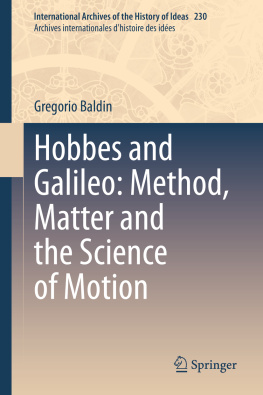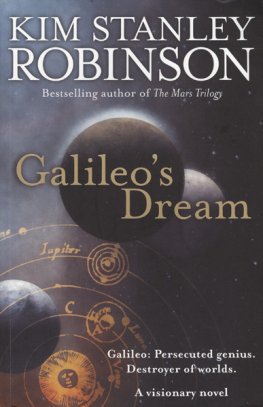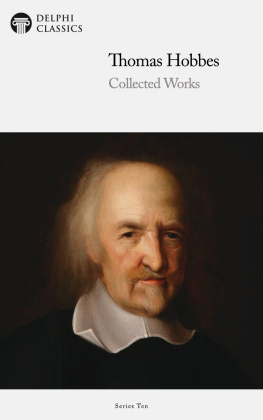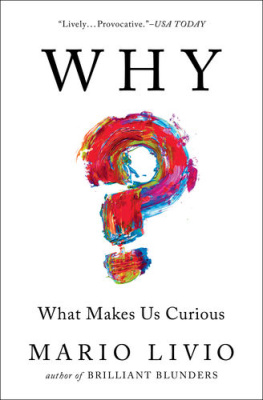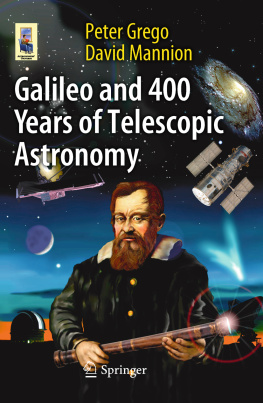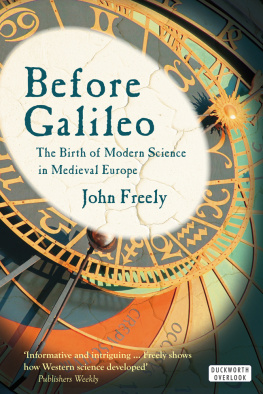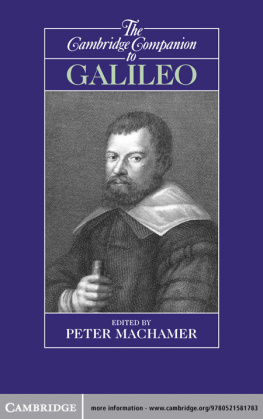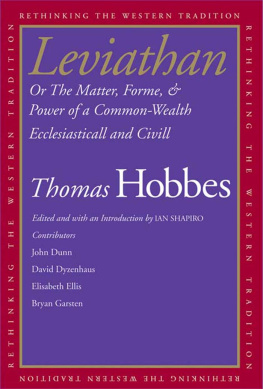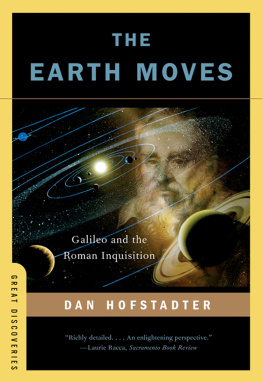Hobbes and Galileo: Method, Matter and the Science of Motion
Here you can read online Hobbes and Galileo: Method, Matter and the Science of Motion full text of the book (entire story) in english for free. Download pdf and epub, get meaning, cover and reviews about this ebook. year: 2020, genre: Religion. Description of the work, (preface) as well as reviews are available. Best literature library LitArk.com created for fans of good reading and offers a wide selection of genres:
Romance novel
Science fiction
Adventure
Detective
Science
History
Home and family
Prose
Art
Politics
Computer
Non-fiction
Religion
Business
Children
Humor
Choose a favorite category and find really read worthwhile books. Enjoy immersion in the world of imagination, feel the emotions of the characters or learn something new for yourself, make an fascinating discovery.
Hobbes and Galileo: Method, Matter and the Science of Motion: summary, description and annotation
We offer to read an annotation, description, summary or preface (depends on what the author of the book "Hobbes and Galileo: Method, Matter and the Science of Motion" wrote himself). If you haven't found the necessary information about the book — write in the comments, we will try to find it.
Unknown: author's other books
Who wrote Hobbes and Galileo: Method, Matter and the Science of Motion? Find out the surname, the name of the author of the book and a list of all author's works by series.
Hobbes and Galileo: Method, Matter and the Science of Motion — read online for free the complete book (whole text) full work
Below is the text of the book, divided by pages. System saving the place of the last page read, allows you to conveniently read the book "Hobbes and Galileo: Method, Matter and the Science of Motion" online for free, without having to search again every time where you left off. Put a bookmark, and you can go to the page where you finished reading at any time.
Font size:
Interval:
Bookmark:
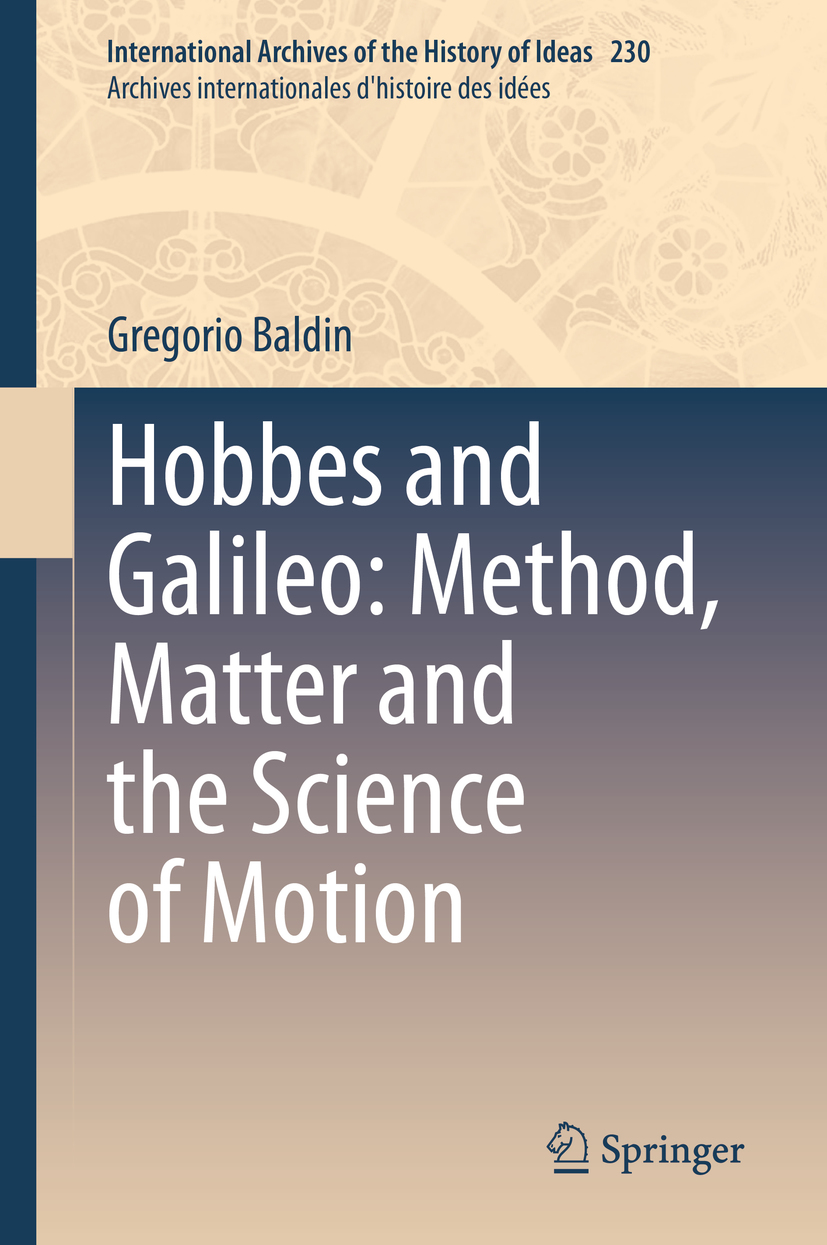
More information about this series at http://www.springer.com/series/5640

This Springer imprint is published by the registered company Springer Nature Switzerland AG.
The registered company address is: Gewerbestrasse 11, 6330 Cham, Switzerland
This book is the English translation of my work,Hobbes e Galileo. Metodo, Materia e Scienza del Moto, published in Italian in 2017 by Leo S. Olschki Editore. I chose to not alter the original text, therefore making no substantial changes. I have only added some considerations in the introduction, which seek to clarify the central thesis that I intend to support in this book. I would like to thank in particular Gianni Paganini , whose support made this edition possible. Special thanks also go to the anonymous referee for his insight comments and remarks and to Guido Giglioni, who gave me important and useful advice.
I started the research leading to this book during my doctoral studies in Philosophy and the History of Philosophy at the University of Piemonte Orientale (Facolt di Lettere e Filosofia, Vercelli), under the guidance of Professor Gianni Paganini, and continued at the cole Normale Suprieure de Lyon, within the LabEx Comod, directed by Professor Pierre-Franois Moreau .
I would also to thank Catherine Bolton, Miriam Hurley, and Sonia Hill for translating my book into English. The last revision of the text has been made by Valerie Beavers, whom I thank warmly. Sadly, Catherine Bolton passed away suddenly in 2017 before completing the translation. We dedicate this translation to the memory of Catherine.
In his autobiography in verses completed in about 1673 at the venerable age of 84,This metaphor invites us to dwell on the sole principle, identified by Hobbes, that holds up and governs all of nature. This is a truth that, while hidden from our eyes (Et mihi visa quidem est toto res unica mundo Vera, licet multis falsificata modis), underpins every phenomenon present in the natural world (Unica vera quidem, sed quae sit basis earum rerum): simply the movement that inhabits our inner parts, and these movements are the cause of our concepts, the children of our brain (Phantasiae,nostri soboles cerebri, nihil extra; Partibus internis nil nisi motus inest).
The second interesting element is represented by the central role of Marin Mersenne, who was Hobbes main counterpart, approved his reflections, and introduced him to the intellectual community (Is probat, et multis commendat). Until then, Hobbes essentially considered himself to be a scholar of classical Greek and Latin.
Several elements in Hobbes correspondence lead us to believe that he had already sketched out some of the subjects he explored in hisElements, just after his Grand Tour.
In fact, even prior to his departure for the Grand Tour, Hobbes had started to focus on scientific matters,
Several autobiographical references seem to backdate Hobbes interest in science to the early 1630s,
These clues tell us that Hobbes main interests already included natural philosophy and, in particular, phenomena connected with optics,though the most interesting documents from this period include two letters he sent to William Cavendish in 1636. In the first, Hobbes explains the fundamental difference he notes betweenmathematicsandnatural philosophy:
InThinges that are not demonstrable, of which kind is thegreatest part of Natural Philosophy, as dependinge upon the motion of bodies so subtile as they are invisibile, much as are ayre and spirits, the most that can be atteyned unto is to have suchopinions,as no certayne experience can confute, and from wich can be deduced by lawfull argumentation, no absurdity, and such are your opinions in your letter of the 3rdJuly wich I had the honour to receave the last weeke; namely thatthe variety of thinges is but the variety of locall motionin the spirits or invisibles parties of bodies. And That such motion is heate.
The letter reveals three especially relevant aspects. First, Hobbes maintains that natural philosophy is not demonstrable
In the letter mentioned above, however, there was another particularly significant element: Hobbes said he agreed with the opinion held by William Cavendish that the variety of thinges is but the variety of locall motion in the spirits or invisibles parties of bodies.The hypothesis that the variety of phenomena is solely the result of changes produced by matter and local motion is the cornerstone of Hobbes natural philosophy. This point reveals the profound influence of Galileos philosophy.
Font size:
Interval:
Bookmark:
Similar books «Hobbes and Galileo: Method, Matter and the Science of Motion»
Look at similar books to Hobbes and Galileo: Method, Matter and the Science of Motion. We have selected literature similar in name and meaning in the hope of providing readers with more options to find new, interesting, not yet read works.
Discussion, reviews of the book Hobbes and Galileo: Method, Matter and the Science of Motion and just readers' own opinions. Leave your comments, write what you think about the work, its meaning or the main characters. Specify what exactly you liked and what you didn't like, and why you think so.

